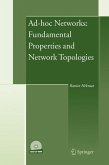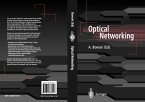Since the advent of optical communications, a greattechnological effort has been devoted to the exploitation of the huge bandwidth of optical fibers. Sta- ing from a few Mb/s single channel systems, a fast and constant technological development has led to the actual 10 Gb/s per channel dense wavelength - vision multiplexing (DWDM) systems, with dozens of channels on a single fiber. Transmitters and receivers are now ready for 40 Gb/s, whereas hundreds of channels can be simultaneously amplified by optical amplifiers. Nevertheless, despite such a pace in technological progress, optical c- munications are still in a primitive stage if compared, for instance, to radio communications: the widely spread on-off keying (OOK) modulation format is equivalent to the rough amplitude modulation (AM) format, whereas the DWDM technique is nothing more than the optical version of the frequency - vision multiplexing (FDM) technique. Moreover, adaptive equalization, ch- nel coding or maximum likelihood detection are still considered something "exotic" in the optical world. This is mainly due to the favourable char- teristics of the fiber optic channel (large bandwidth, low attenuation, channel stability, ...), which so far allowed us to use very simple transmission and detection techniques.
From the reviews:
"This book is the result of the 2004 Tyrrhenian International Workshop on Digital Communications ... . Unlike typical proceedings document, however, the editor has expended considerable effort to bring a uniform editorial style to the book. Practitioners will appreciate that." (Wes Munsil, Computing Reviews, April, 2005)
"This book is the result of the 2004 Tyrrhenian International Workshop on Digital Communications ... . Unlike typical proceedings document, however, the editor has expended considerable effort to bring a uniform editorial style to the book. Practitioners will appreciate that." (Wes Munsil, Computing Reviews, April, 2005)








